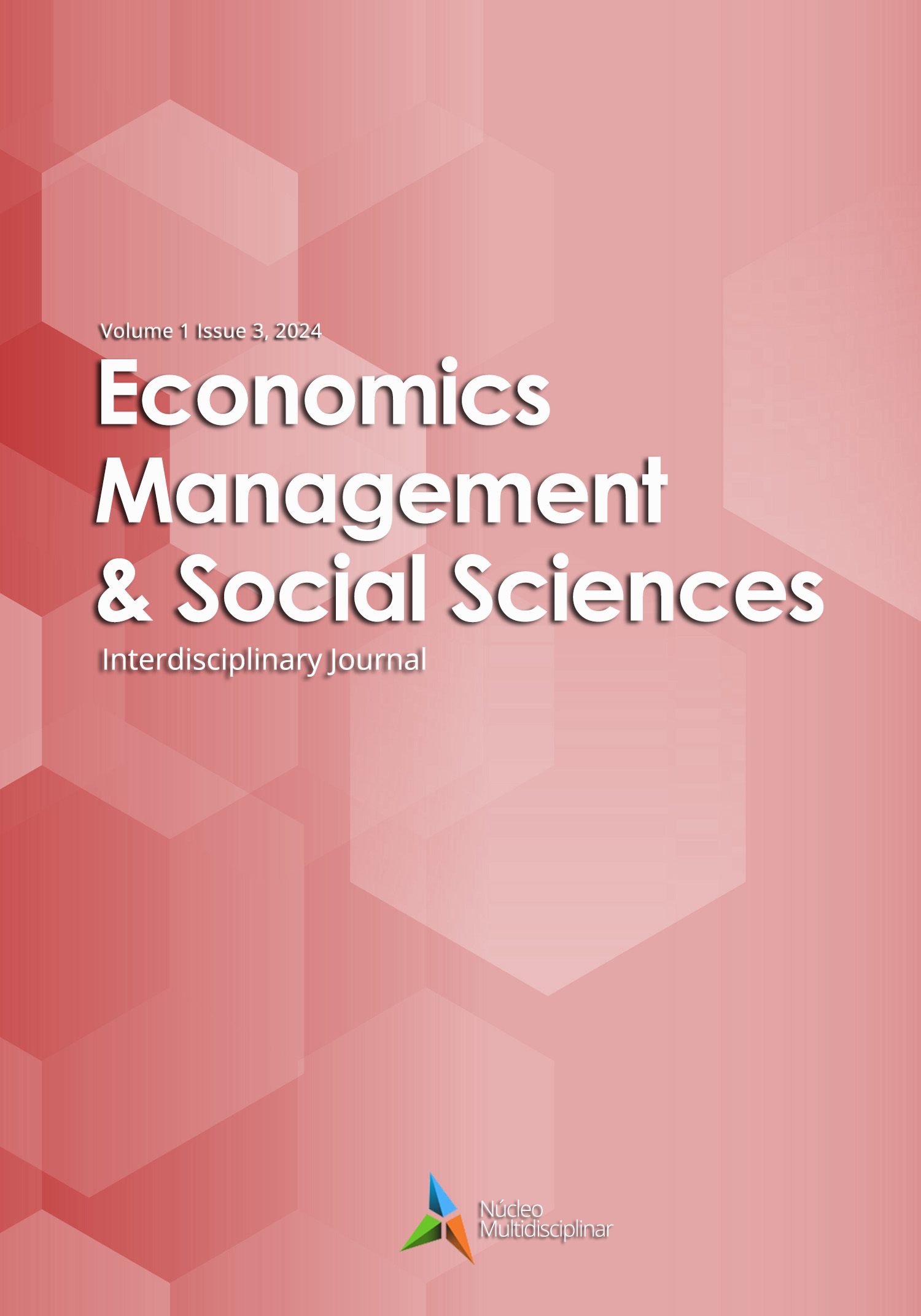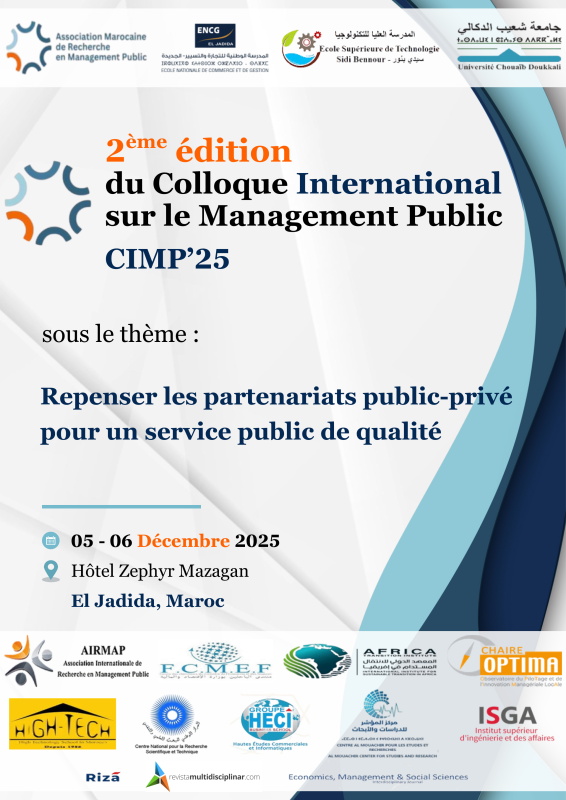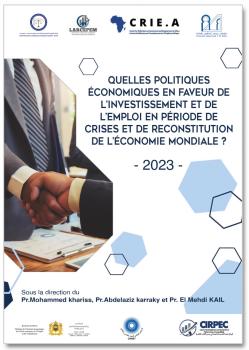Mesure des avantages comparatifs du secteur des services
DOI :
https://doi.org/10.23882/emss24073Mots-clés :
RCA, VWRCA, RCA composite, Valeur Ajoutée Brute (VAB), Servitisation, Moyenne géométriqueRésumé
Le secteur des services est devenu le secteur dominant du PIB indien, avec une contribution significative aux exportations, aux IDE et à la création d’emplois. Il est impératif d'évaluer l'avantage comparatif révélé (ACR) pour le commerce des services nécessitant une modification des ACR spécifiques au produit et au temps en raison des caractéristiques uniques des services telles que l'intangibilité, la non-stockage et les différents modes de fourniture de services, contrairement au commerce transfrontalier des services. marchandises. Le document suggère l'agrégation des RCA de chaque catégorie de service, permettant d'évaluer la progression/le déclin de l'indice au fil du temps. En se concentrant sur le volume et la vitesse du commerce des services, il est suggéré d'utiliser l'indice Visvizi-Wosiek RCA (VWRCA) pour le secteur des services satisfaisant les propriétés souhaitées. Pour un nombre n de catégories de services, le ratio 〖VWRCA〗_cj/〖VWRCA〗_0j reflète la nature stochastique du VWRCA de la j-ième catégorie de service dans l'année en cours par rapport à l'année de base où les progrès sont indiqués si 〖VWRCA〗_cj/ (VW〖RCA〗_0j )>1 et le VWRCA composite du i-ème pays dans l'année en cours peuvent être obtenus par agrégation géométrique de ces ratios, c'est-à-dire VW〖RCA〗_C0^i = ∏_(j=1)^n▒ 〖VWRCA〗_cj/〖VWRCA〗_0j Une enquête future pourrait être entreprise pour comparer l'indice VWRCA avec une période de base choisie et la RCA traditionnelle, ainsi que pour tracer des graphiques du secteur des services de l'Inde dans le temps et également un graphique pour chaque catégorie de services.
Références
Alkraiji, Abdullah Ibrahim (2020): An examination of citizen satisfaction with mandatory e-government services: Comparison of two information systems success models. Transforming Government: People, Process and Policy, 15 (1), 36-58 doi.org/10.1108/TG-01-2020-0015
Balassa, B. A. (1986): Comparative advantages in manufactured goods: A reappraisal. Review of
Economics and Statistics, 68(2), 315–319.
Balassa, B (1965): Trade liberalisation and “revealed” comparative advantage. The Manchester
School, 33(2):99 – 123
Banerjee, P., & Rajmal. (2022). Revealed Comparative Advantage in Services Exports: How Is India Different from China? The Indian Economic Journal, 70(3), 417-436.
https://doi.org/10.1177/00194662221104762
Burange, L.G., Chaddha, S. & Kapoor, P. (2010): India’s Trade in Services. Indian Economic Journal 58 (2), 44-62. DOI: 10.1177/0019466220100204
Chakrabartty, Satyendra Nath and Sinha, Deepankar (2022): Composite Revealed Comparative Advantage Index: A Non-parametric Approach. Eurasian Journal of Business and Economics, 15(30), 25-44.
De Saint Vaulry, A. (2008): Base de données CHELEM commerce international du CEPII. Working Papers 2008-09, CEPII research center.
Elsa Leromain and Gianluca Orefice, (2014): New revealed comparative advantage index: Dataset and empirical distribution, International Economics, (139), 48-70. https://doi.org/10.1016/j.inteco.2014.03.003.
Hamed, K. H., and Rao, A. R. (1998): A modified Mann-Kendall trend test for autocorrelated data, Journal of Hydrology, 204; 182-196
Harris, Richard D. F. and Elias Tzavalis (1999): Inference for Unit Roots in Dynamic Panels where the Time Dimension is Fixed, Journal of Econometrics 91(2), 201-226. DOI: 10.1016/S0304-4076(98)00076-1
Hiziroglu, A., Hiziroglu, M., & Kokcam, A. H. (2012): Competitiveness in Services: Turkey Versus European Union. Procedia - Social and Behavioral Sciences, 62 (6),436 – 440. DOI: 10.1016/j.sbspro.2012.09.071
Iapadre, P.L. (2001): Measuring international specialization. International Advances in Economic Research 7, 173–183 (2001). https://doi.org/10.1007/BF02296007
Langhammer, Rolf J. (2004) : Revealed comparative advantages in the services trade of the United States, the European Union and Japan: what do they tell us?, The journal of world investment & trade, ISSN 1660-7112, Werner, Geneva, Vol. 5, Iss. 6, pp. 887-896
Ministry of Commerce and Industry, GOI (2023). Annual Report 2022-23.
Ministry of Statistics and Programme Implementation, GoI (December, 2023): Annual and Quarterly Estimates of GDP at constant prices, 2011-12 series
Ministry of Statistics & Programme Implementation, GoI (May, 2021): Press Note on Provisional Estimates of Annual National Income 2020-21 and Quarterly Estimate of Gross Domestic Product for the Fourth Quarter (Q4) of 2020-21
Nath, H. K., Liu, L., & Tochkov, K. (2015): Comparative advantages in U.S. Bilateral services trade with China and India. Journal of Asian Economics, 38, 79–92.
Saeedi, Kawther and Visvizi.Anna (2021): Software Development Methodologies, HEIs, and the Digital Economy. Education Sciences, 11 (2). DOI: 10.3390/educsci11020073
Seyoum, B. (2007): Revealed comparative advantage and competitiveness in services: A study with special emphasis on developing countries, Journal of Economic Studies, 34(5), 376- 388. https://doi.org/10.1108/01443580710823194
Stellian, Rémi and Danna-Buitrago, Jenny (2019): Revealed comparative advantages and regional specialization: Evidence from Colombia in the Pacific Alliance, Journal of Applied Economics, 22:1, 349-379, DOI: 10.1080/15140326.2019.1627722
UNCTAD (2023): UNCTAD stat: Nowcasts https://unctadstat.unctad.org/EN/Nowcasts.html
United Nations. (2010): Manual on Statistics of International Trade in Services 2010. New York: United Nations Publication
Wosiek, Roman, and Anna Visvizi. (2021): The VWRCA Index: Measuring a Country’s Comparative Advantage and Specialization in Services. The Case of Poland. Economies 9: 48. https://doi.org/10.3390/economies9020048
Wu, J. and Lin, C. (2008) National Port Competitiveness: Implications for India. Management Decisions, 46 (10), 1482-1507. https://doi.org/10.1108/00251740810920001
Yu, R., Cai, J. C., & Leung, P. S. (2009): The normalized revealed comparative advantage index. Annals of Regional Science, 43(1), 267-282. DOI: 10.1007/s00168-008-0213-3
Téléchargements
Publiée
Comment citer
Numéro
Rubrique
Licence
(c) Tous droits réservés Satyendra Chakrabartty 2024

Ce travail est disponible sous licence Creative Commons Attribution - Pas d’Utilisation Commerciale 4.0 International.







